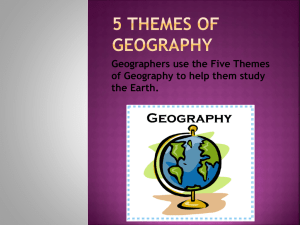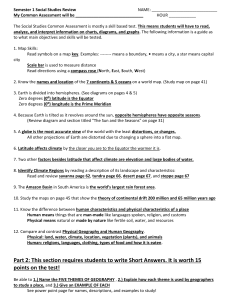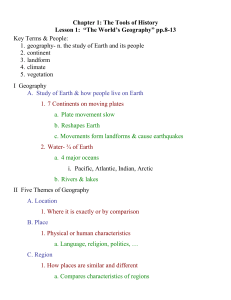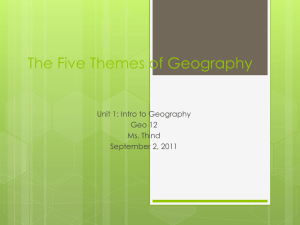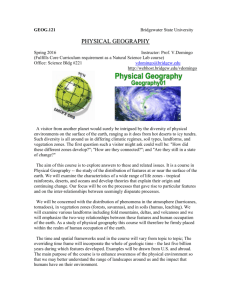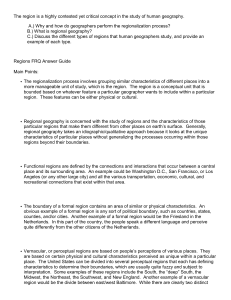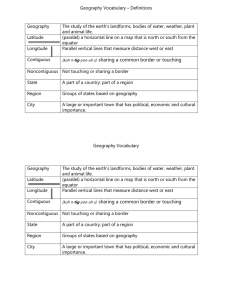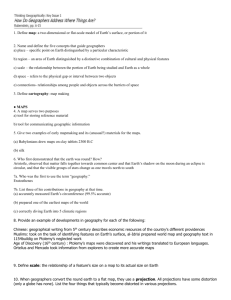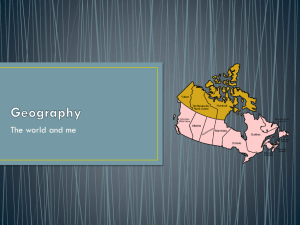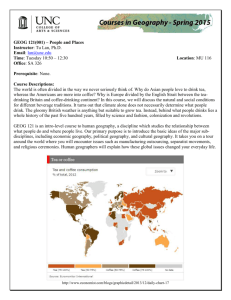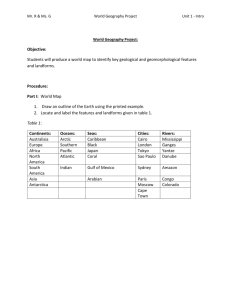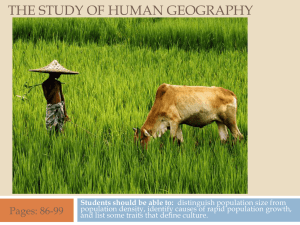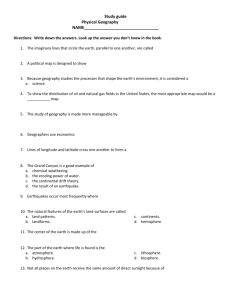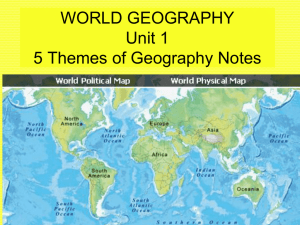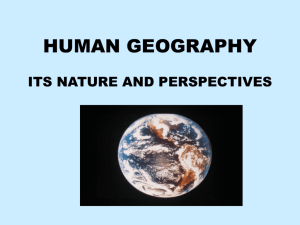Unit 1 Exam Study Guide
advertisement
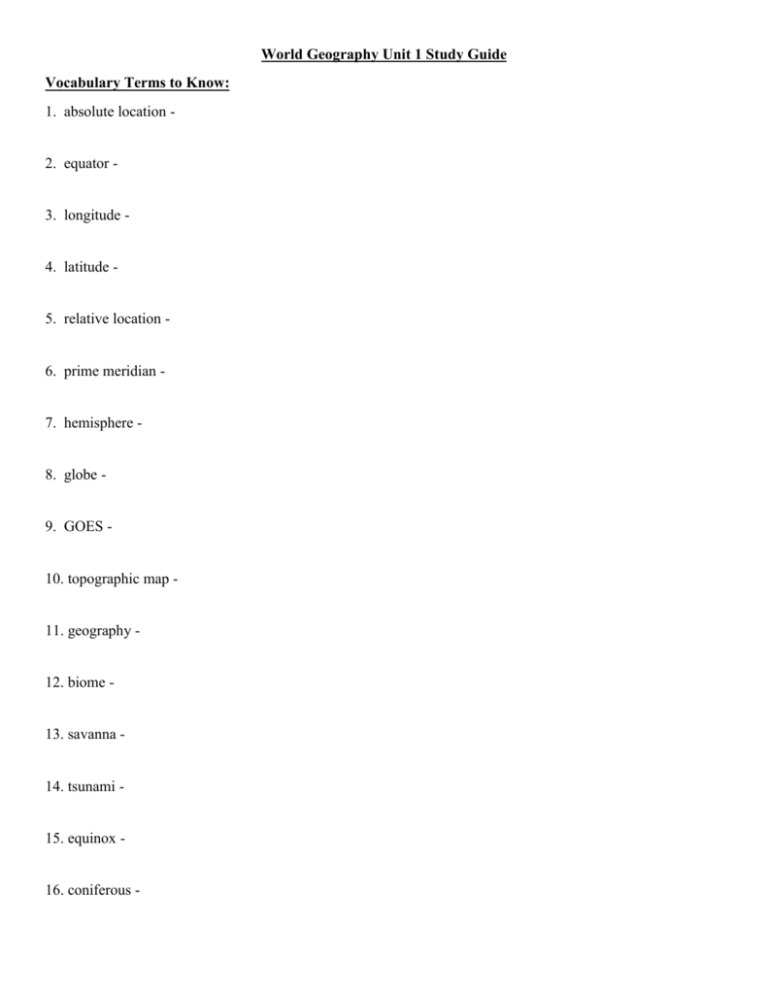
World Geography Unit 1 Study Guide Vocabulary Terms to Know: 1. absolute location - 2. equator - 3. longitude - 4. latitude - 5. relative location - 6. prime meridian - 7. hemisphere - 8. globe - 9. GOES - 10. topographic map - 11. geography - 12. biome - 13. savanna - 14. tsunami - 15. equinox - 16. coniferous - 17. canopy - 18. compass rose - 19. peninsula - 20. archipelago - Answer the following questions in complete sentences: 21. What do geographers do to divide places on Earth on the basis of physical features? (7) 22. Landforms and bodies of water appear on what type of map? (20) 23. Why do geographers break down the 6 major climate zones (tropical, dry, mild, continental, polar, mountain) into 13 smaller zones? (60 – 63) 24. What are the 4 major factors that influence climate? (54) 25. Capital cities would most often be shown on what type of map? (21) 26. What are the 2 most significant factors in defining different climates? (59) 27. What characteristic categorizes a region as being a desert climate zone? (62) 28. What is geography? (5) 29. A location of 0˚ latitude would mean the area is located on the _____. (map skills) 30. What are the classifications of Earth’s biomes? (65) 31. What are the characteristics of tropical savannas? (66) 32. How are landforms measured? (notes) 33. Physical geography differs from cultural geography because it focuses on ____. (notes) 34. How do you express absolute measurement of a location? (6) 35. What does it mean when an area is classified as a perceptual region? (8) 36. What is the measurement of the International Date Line? (357) 37. What are the characteristics of a functional region? (8) 38. Which imaginary lines on the earth’s surface converge at the poles? (6) 39. Which lines run parallel to the equator? (6) 40. What is a rain shadow? (51) 41. What are the 3 types of precipitation formations? (50) 42. Know the following types of map projections: Planar, Robinson, Interrupted, and Mercator. (18 – 19) 43. Be able to describe the world’s climate zones. (60 – 63)

